
Improve your customer service, grow your mailing list for your email marketing, and engage with your prospects in an innovative manner. You can create a QR code for email with QR.io.
Email QR codes are one of the best ways to connect with your clients online, representing many advantages for your customer service. Using QR codes for advertising campaigns is a great idea.
You can use QR codes to share a website URL, promote your social media platforms, link to PDF files, and boost your app downloads. But also, you can utilize QR codes to grow your mailing lists, as the ROI of email marketing is a whopping $36 for every $1 spent.
In this post, you will learn about the benefits of using an email QR code and how to create one on QR.io’s QR code generator.
Table of Contents
- What Is an Email QR Code?
- Advantages of Email QR Codes
- Dynamic QR Codes vs Static QR Codes
- How to Create an Email QR Code on a QR Code Generator
- How to Create an Email QR Code in Bulk
- FAQs
- Wrap-Up
What Is an Email QR Code?
An email QR code —or email address QR code— is a type of code that helps users send an email by scanning the code with a mobile device or a scanning app.
When users scan the QR code with a QR code reader, it will enable their default email app, with a preset recipient’s email address, subject, and body. By pressing “send,” users will be able to send the email right away, but they can also edit the email contents if necessary.
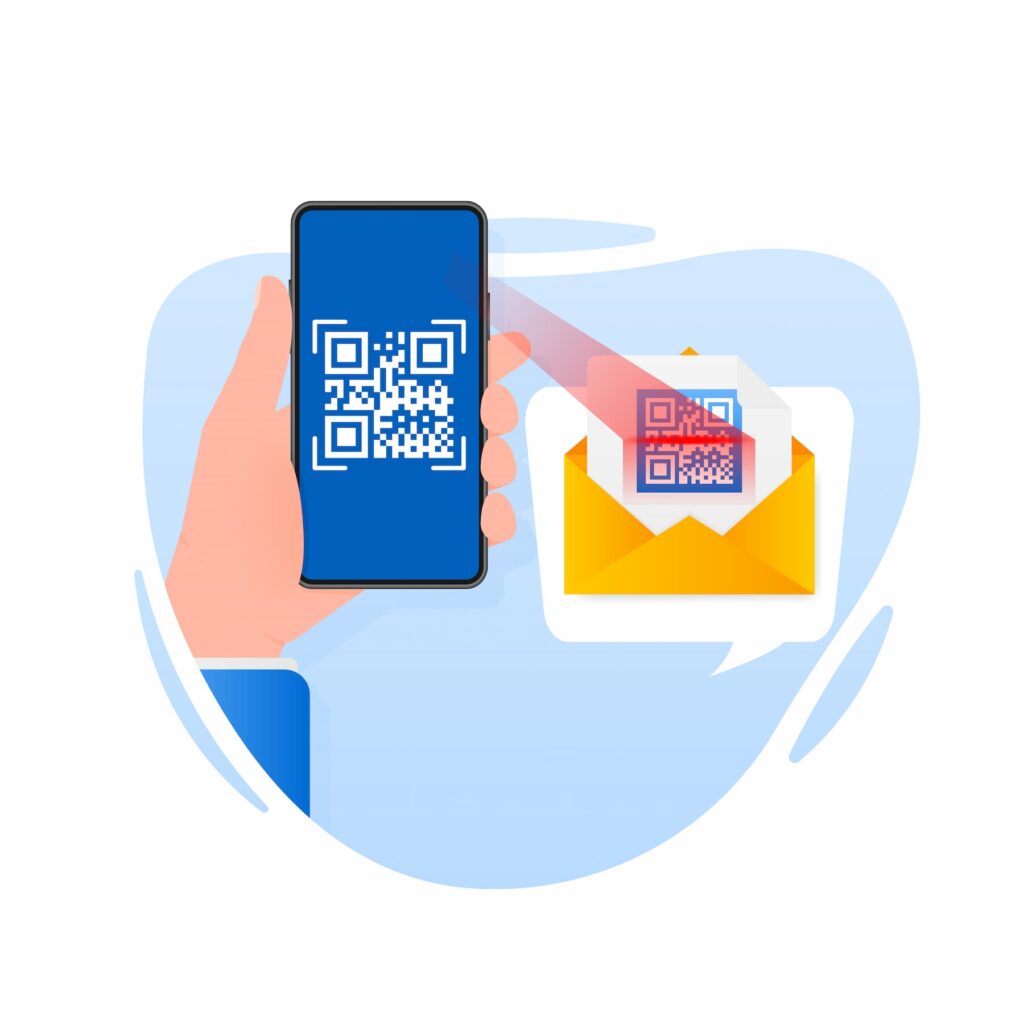
On the receiving end, the creator of the email QR code will receive the email as if it had been sent from an email app or service —Gmail, Hotmail, Outlook, and more.
A QR code email is a fantastic tool that any marketer can reap the benefits from! Moreover, to provide a hundred percent deliverability and seamless experience with email QR codes, you could validate email address from time to time.
Advantages of Email QR Codes
Email QR codes are a solid way to connect with customers in any industry. Let’s look at why you should incorporate an email QR code.
Convenience
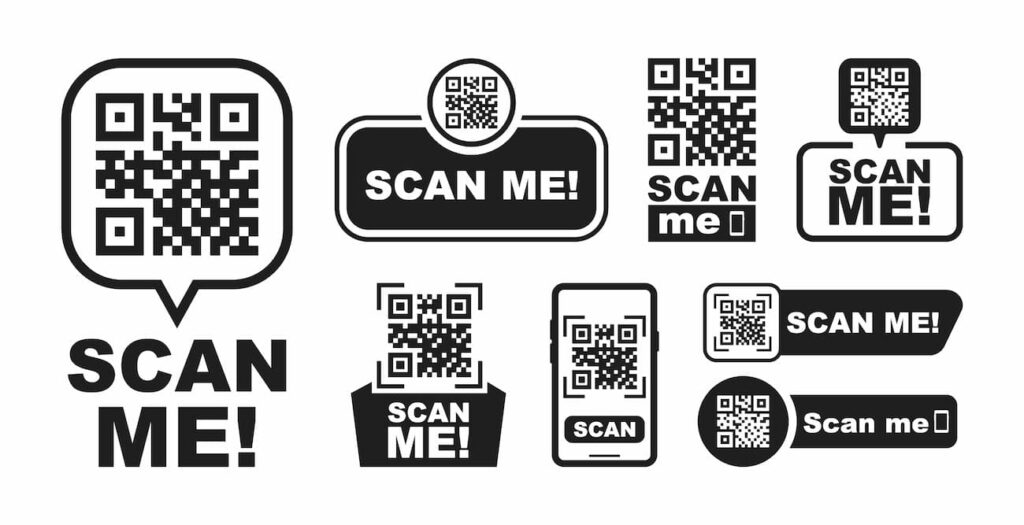
The email QR code has arrived to replace the traditional contact email available on posters, banners, and other print material. The user only needs to pull out their smartphones, activate their camera or any other QR code scanning app, and scan the code.
This spares them the cumbersome process of opening the app and typing the recipient’s email, the subject line, and the body. Once they scan it, they can send it in a flash!
By removing the need to manually enter an email address, QR codes can save time. This is especially useful if the email address is lengthy or complex.
Streamline email campaigns and customer service
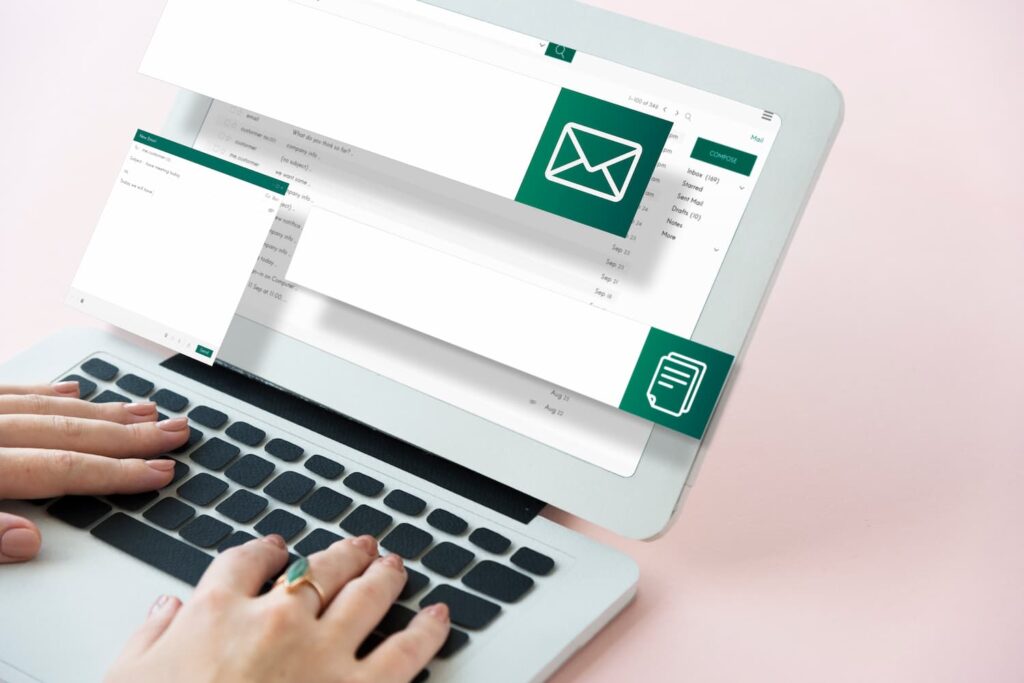
When you create an email QR code and pre-type the email ID, the subject, and the message, you’re facilitating the process for users. This is advantageous for customer service, as you can prompt clients to send an email with a pre-set direct request.
For example, if you create an email QR code to allow clients to request more information about a product or service, adding a call to action will let them know exactly what the email’s message will be.
Provide mistake-free information
Since the email recipient, the subject, and the body are pre-set, anybody scanning the code and sending the email will make no mistake as they don’t need to type all the information.
This certainly minimizes errors to near-zero, which will almost guarantee that the email QR code creator can be contacted and that the embedded message will be the one they expect.
Grow your email list
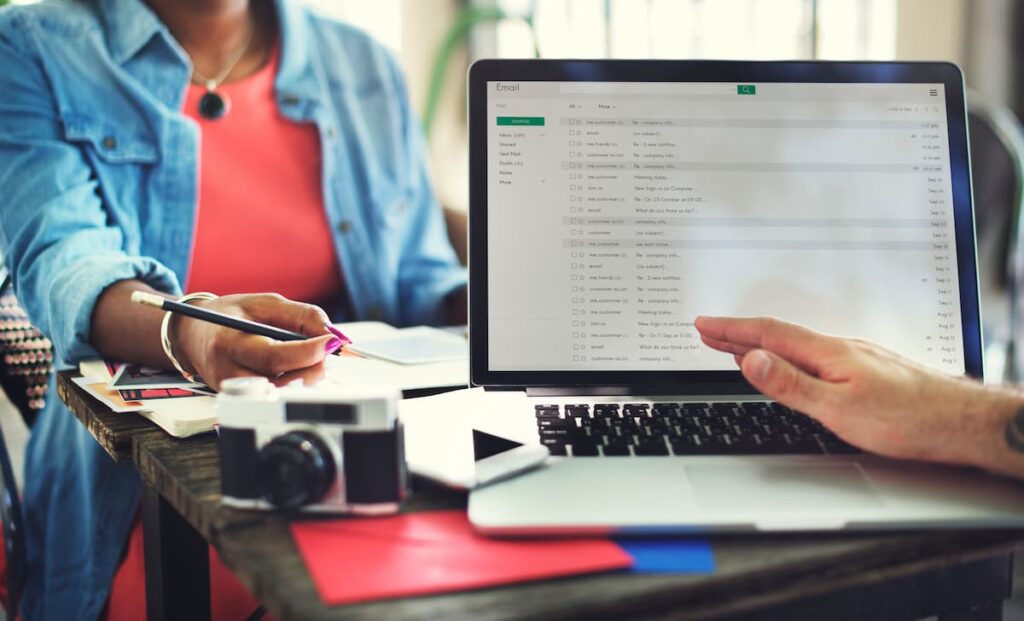
When people scan your email QR code, they enable their email app automatically. When they send it, you’ll be able to collect the email addresses and use them to grow your mailing list for marketing purposes.
This is an essential advantage when companies use the QR code to boost their email marketing campaigns. Besides, QR code technology can be used on many other types of media, linking to a web page, social media platform, video file, audio file, and much more.
Worry not about security
QR codes are more secure than regular email addresses because they can be encrypted, making them less susceptible to spam and phishing scams.
To prevent unwanted access to the information contained in a QR code, QR codes are encrypted. This is done by using a secret key to scramble the data in a way that makes it difficult or impossible to decode without the key.
QR codes can be encrypted using symmetric-key encryption and public-key encryption, among other encryption algorithms. Public-key encryption employs distinct keys for encryption and decryption while symmetric-key encryption uses the same key for both.
Additionally, implementing DMARC quarantine protocols can further enhance the security of QR codes, helping mitigate potentially malicious attempts and safeguard against unauthorized access or phishing threats.
Also see: Use the Business Page QR Code to Smartly Promote Your Company
Dynamic QR Codes vs Static QR Codes
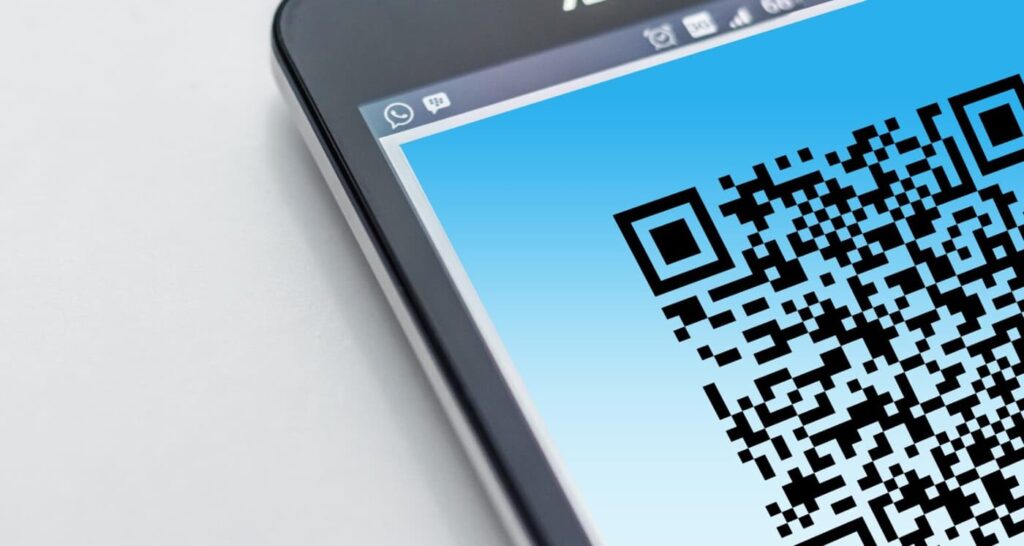
The main difference between a dynamic QR and a static QR is that in the case of the static one you cannot change the content and this is usually very simple.
However, in the dynamic QR code, you can edit the content as many times as you want, without the need to change the design of the QR. Also, you can track the number of scans, the location, the device used, and the operating system, so you gain top insights.
The email QR code is static, which means you cannot edit it or track data. Usually, dynamic QR codes are destined for social media, business cards, and other content formats. Regardless of the QR code type, the QR code to send an email is a killer tool.
How to Create an Email QR Code on a QR Code Generator
You can create email QR codes for free on QR.io’s generator. Just follow these simple steps.
Step 1. Go to QR.io’s homepage and select Email
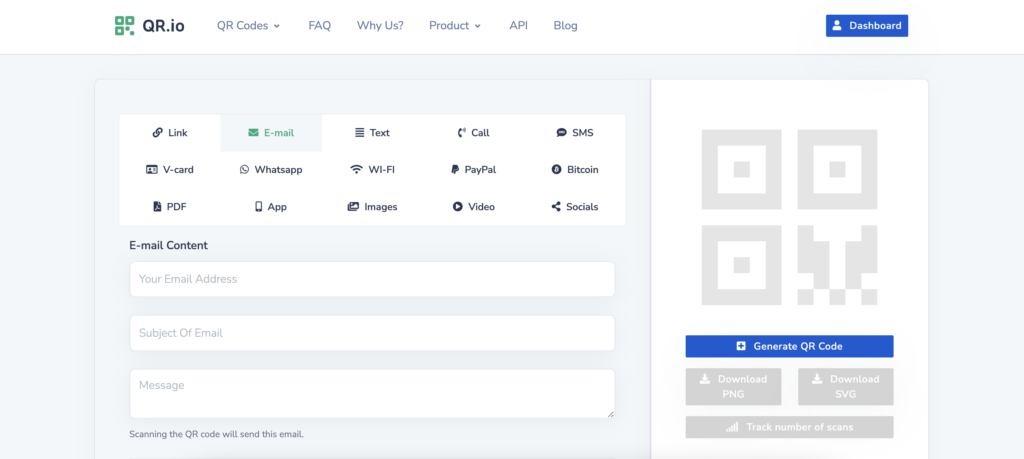
The generator allows you to create several types of QR codes. On this occasion, choose Email.
Step 2. Enter the information

Type in the recipient’s email, the subject line, and the body of the message.
Step 3. Customize
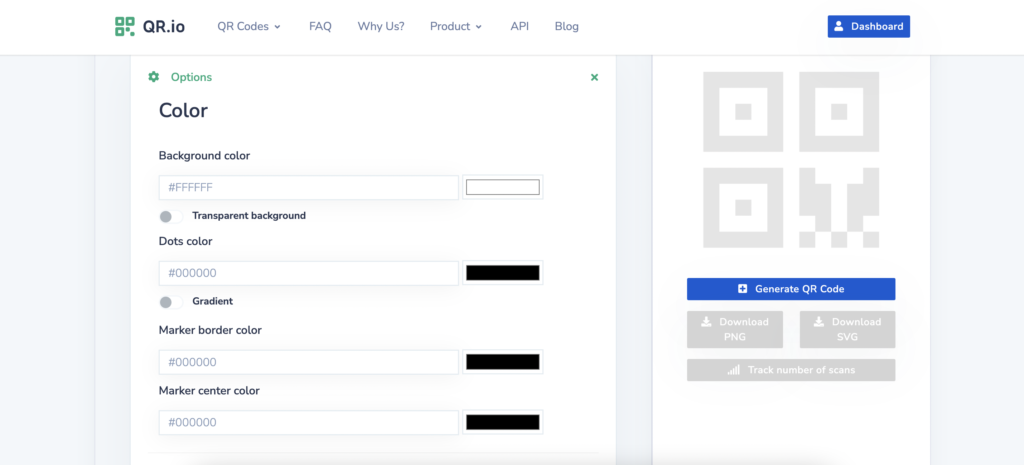
Now it’s time to flex your QR code design muscles. Personalize your code by choosing shape and color, and by adding an image, logo, and a call to action such as “contact us here.”
Step 4. Click Generate Code
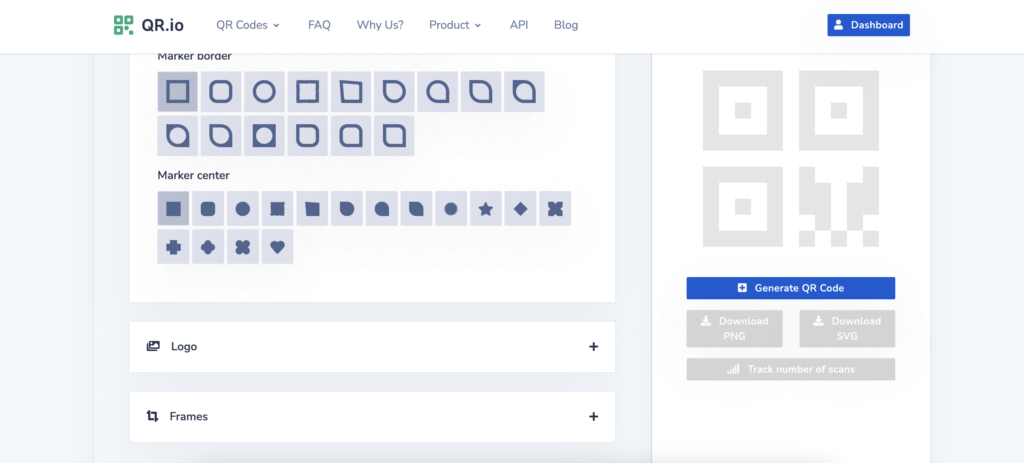
When all the information and the customization are ready, you can create your code.
Step 5. Download and choose format
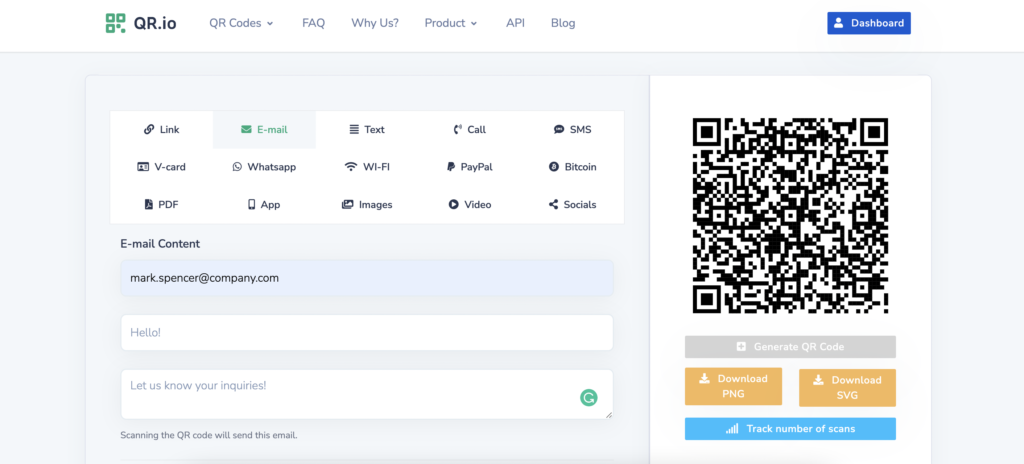
Download your code in either SVG or PNG formats, depending on the size you might need.
Also see: QR Code PNG Format: How to Do It Right?
How to Create an Email QR Code in Bulk
You can create email QR codes in bulk by opening a QR.io account. Once you do it, just follow these steps.
Step 1. Open a QR.io account
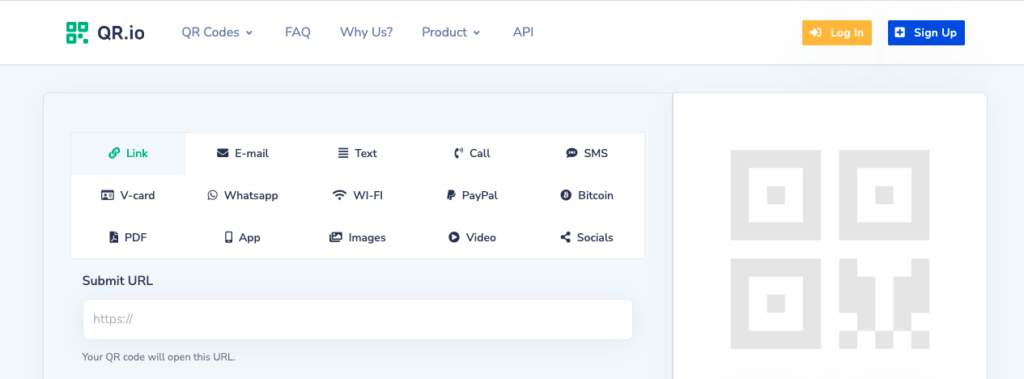
Go to the homepage and click Sign Up at the top-right corner.
Step 2. Click Create QR Code on the dashboard
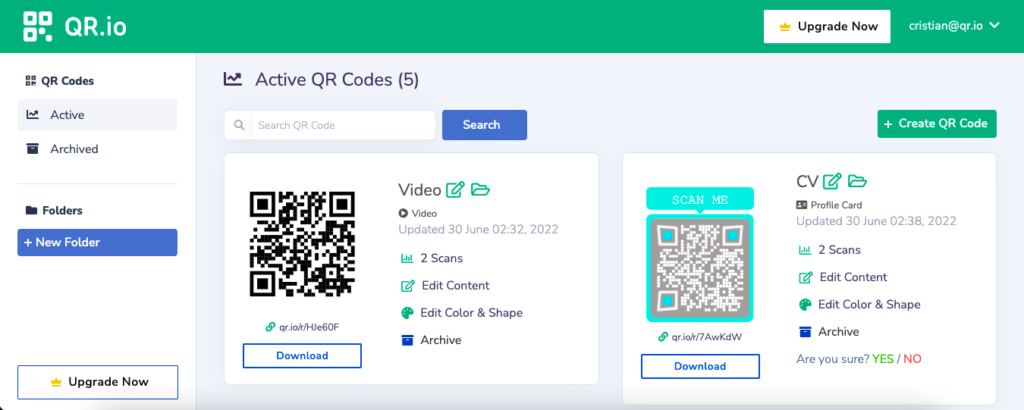
Once you create your account, go to the dashboard and click Create QR Code
Step 3. Go to Static > Email and enter the information
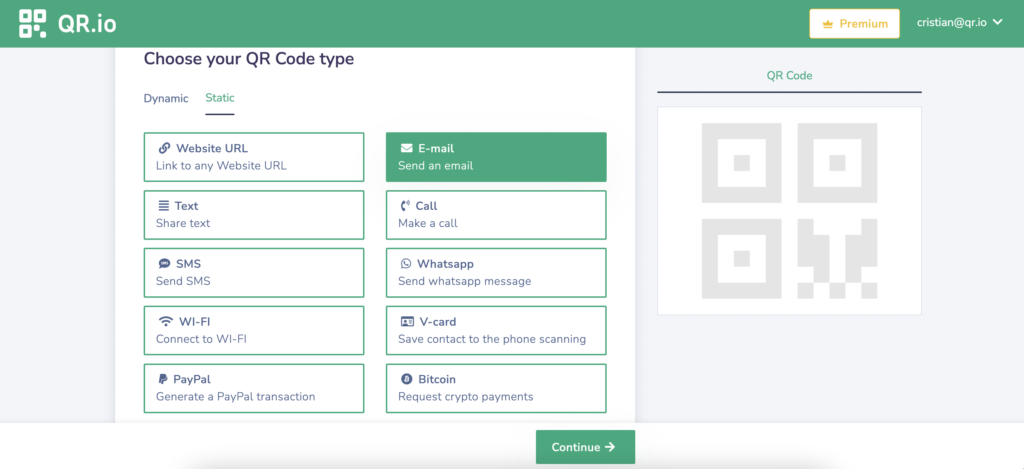
On the generator, select Static > Email and type in the email’s recipient, the subject, and the pre-set message body. Click Continue.
Step 4. Click Bulk Creation
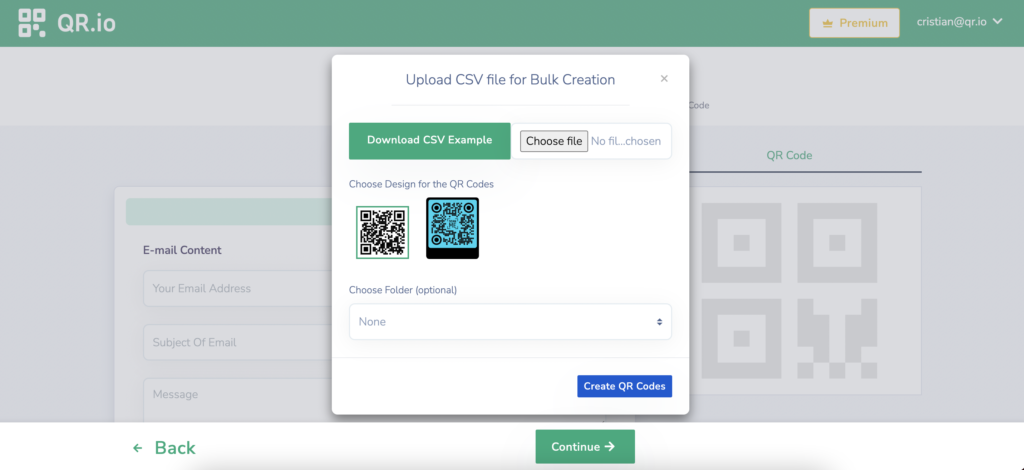
To start the bulk process, clock Bulk Creation at the top of the information dashboard and browse for the CSV file. You can also choose a pre-saved design and a folder. Then click Create QR Codes > Continue
Step 6. Customize
Personalize your code by choosing shape and color, and by adding an image, logo, and a call to action. Click Continue.
Step 7. Download and test
Once the code is ready on the home dashboard, download it in SVG or PNG format. Very importantly, test your code from several angles, scanning distances, and under different lighting conditions to make sure it is scannable.
Watch out! This code is static, so if you enter the wrong information you will have to create a new one. Things can get nasty if you don’t test it and then have it printed on hundreds of marketing deliverables!
FAQs
How to generate an email QR code
Follow these steps:
- Go to QR.io’s home page
- Select Email
- Enter the information
- Customize
- Export
Can I edit my email QR code?
No! Email QR codes are static so entering the wrong information or customizing it in a way that makes it unscannable means trouble. You would have to create a new QR code from scratch!
Wrap-Up
You can create a QR code for emails to grow your email marketing list, improve customer service, and innovatively connect with clients and prospects. They can be customized and printed on flyers, banners, product packaging, business cards, or any marketing material.
